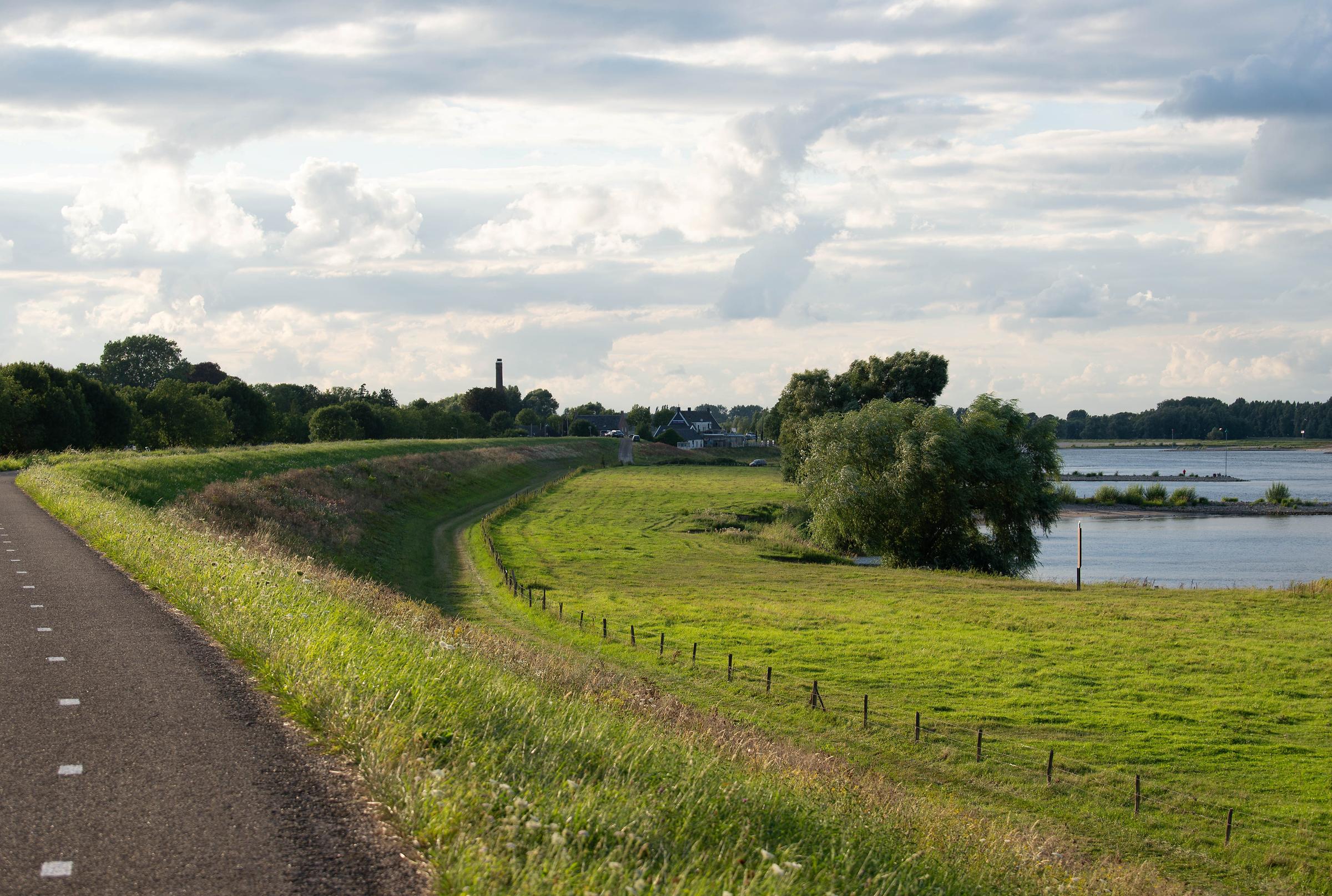- About Ajou
- Admission
- Academics
- Research
-
International
International
- Campus Life
-
News and Event
News and Event
-
AUT
AUT
Major Research Result
NEW Korean Scientists Propose New Environment-Friendly Approach to Soil Treatment
- 2021-10-27
- 7108
Scientists delve into the use of biopolymers as binders to prevent soil erosion in dikes and support plant growth
Several eco-friendly biological soil treatment approaches have recently been proposed and verified in the laboratory as effective soil improvement methods. However, their validation in field-scale studies is lacking. To this end, scientists in Korea test a new method for soil reinforcement using biopolymer-based binders, bridging the gap between laboratory-scale experiments and actual implementations on the field and paving the way for erosion mitigation, revegetation, and river ecosystem preservation.

Both natural and artificial dikes provide critical protection against floods. In a new study, scientists from Korea have tested an environment friendly soil treatment method that can help these structures withstand erosion.
Photo courtesy: Smeerjewegproducties on Shutterstock
Among the various dreadful consequences of climate change, increased rainfall and flooding pose the greatest threat to people living near rivers. It is, therefore, important for civil engineers to mitigate the progressive deterioration of levees (dikes), both natural and artificial, due to soil erosion. While levee structures can be strengthened in many different ways, the most common practice involves using cement as a soil binder—an approach that causes high CO2 emissions and further accelerates climate change.
Fortunately, a more environmentally conscious strategy has been the focus of soil research lately: biopolymer-based soil treatment (BPST). Biopolymers refer to molecules excreted by certain microorganisms that can be effectively used as eco-friendly binders for strengthening and stabilizing soil. However, while scientists regard BPST as a promising approach, its potential has been limited to laboratory experiments, with few field-scale tests conducted to determine the best practices for field implementations.
Against this backdrop, a team of scientists led by Dr. Ilhan Chang of Ajou University, Korea, set out to bridge the gap between lab and field performances of BPST. Their study is now published online in Construction and Building Materials. “The strongest motivation for my research was to replace the high CO2-emitting cement with the low carbon-emitting microbial biopolymers in geotechnical engineering,” says Dr. Chang.
The researchers developed and tested a new BPST on-site spraying method in which soil from the target site was mixed with biopolymers and applied on to a levee. They compared different biopolymer combinations and on-site mixing parameters and checked if adding the dry biopolymers to the mixing tank was better or worse than adding them as a pre-hydrated solution. They found that the solution form led to a better quality when mixed previously at a mixed volume of 1 m3 for 20 minutes or longer.
Besides providing protection against erosion caused by wind and water, BPST naturally promotes the growth of vegetation and helps plants survive under harsh conditions. Thus, it can be leveraged to reduce the amount of chemical additives used in revegetation practices. Excited about its prospects, Dr. Chang says, “We believe that the BPST technology could become an effective countermeasure against global land degradation and desertification issues, as well as a powerful tool in afforestation projects.”
Let us hope further research efforts will unlock the true potential of BPST, both as a protective strategy against the forces of nature and as a means to create a greener tomorrow.
Reference
Authors: | Seunghwan Seo1, Minhyeong Lee2, Jooyoung Im2, Yeong-Man Kwon2, Moon-Kyung Chung1, Gye-Chun Cho2, and Ilhan Chang3,* |
Title of original paper: | Site application of biopolymer-based soil treatment (BPST) for slope surface protection: in-situ wet-spraying method and strengthening effect verification |
Journal: | Construction and Building Materials |
DOI: | 10.1016/j.conbuildmat.2021.124983 |
Affiliations: | 1Department of Geotechnical Engineering Research, Korea Institute of Civil Engineering and Building Technology 2Department of Civil and Environmental Engineering, Korea Advanced Institute of Science and Technology 3Department of Civil Systems Engineering, Ajou University |
*Corresponding author’s email: ilhanchang@ajou.ac.kr
About Ajou University
Founded in 1973, Ajou University has quickly grown to become one of the top universities in the Republic of Korea. With over 15,000 students and 50 research centers in diverse fields, Ajou University partakes in the largest national research and graduate education project funded by the Korean Ministry of Education. In line with its recently reformed vision, Ajou University’s goal is to change society by connecting minds and carrying out high-impact research to improve the welfare of people in and outside Korea.
Website: https://www.ajou.ac.kr/en/index.do
About the author
Dr. Ilhan Chang is an Associate Professor with the Department of Civil Systems Engineering at Ajou University, Republic of Korea. He earned his B.S., M.S., and Ph.D. degrees in Civil and Geotechnical Engineering from Korea Advanced Institute of Science and Technology (KAIST). Dr. Chang and his research group are mainly focusing on multi-disciplinary research for emerging geotechnical engineering subjects, including soil characterization, ground improvement, soil erosion and preservation, biopolymer-based soil treatment (BPST), biological/bio-inspired soil treatment, anti-desertification, hydro-geotechnical engineering, new civil engineering materials, and sustainable urban development.
